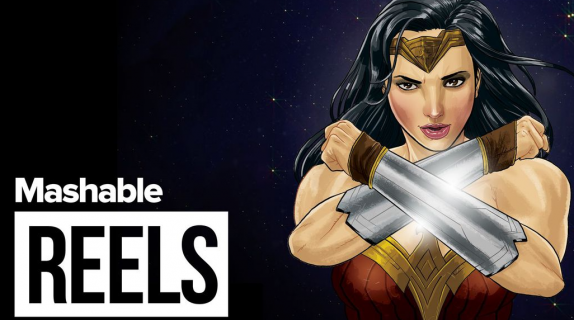Mashable may be a media entertainment company that focuses on super fans, but it’s serious about its data-driven approach.
“Data’s not scary,” said Robyn Peterson, chief technology officer, Mashable. “Creative folks are starting to think like marketers.”
“We want to make sure what we create has the best chance to succeed,” said Gregory Gittrich, chief content officer, Mashable. “We take all the data we can pull together to inform the content creation.”
About a year ago, the company pulled in its data science team into the same room with its creatives. The result is entirely purpose built content, catered specifically to a particular audience or platform.
“The biggest and most common mistake that we see is viewing video as one monolithic thing and take content and use it in variety of places,” said Gittrich. “We would never take series that we produced on Snapchat and put them on Facebook and pretend it’d be a good user experience.”
This has led to innovations like Mashable Reels, a vertical video click-through story experience designed for the mobile web, as well as Kilogram, Mashable’s own algorithm which identifies influencers and influenceables.
“Influencer marketing today is fundamentally flawed,” said Peterson. Someone with the most followers on Instagram “may or may not be the best person to spread messages,” he said. The influencers in our lives aren’t always celebrities or famous people—it’s our friends and family, everyday influencers, Peterson explained.
“Kilogram helps identify those people and work with them on a big scale,” said Peterson.
Mashable argues that its data-driven approach doesn’t sap creativity.
“Data doesn’t take creativity away,” said Peterson. “It gives a platform for artists to stand on top of.”
Indeed, Peterson identifies the merging of data and creative as the next frontier.
“Being able to see what over-indexes with audiences and threading a story through all that is a real art form,” said Peterson. “It’s going to be a skill that becomes more common.”
But data will never do the work for you.
“It’s not that data serves up an idea with a bow around it,” said Gittrich. “It’s not that the data is something that dictates everything we do. It has to be creativity and data together. Data gives us a great starting point in the discovery process and shows us how to optimize going forward and reach the right audience.”
But, you can never forget who you are.
“Too many folks have been trying to do too many things and gotten too broad,” said Gittrich. “You have to really focus on what you’re good at, and be true to that, and understand your brand, the audience you’re speaking to and entertaining and know where you reach them. It’s not a one size fits all. People make mistakes in all parts of that equation—deviating from the brand or not understanding their audience or trying to do something that makes no sense on a platform.”
While many brands and creators are ramping up content in the face of the content arms race, Mashable has taken an opposite tack.
“We cut our production year over year by 30 percent very intentionally to focus on quality, [on] purpose building stories,” said Gittrich.
Mashable has learned what every great artist knows: every good story—even those you find on your phone—has a purpose.
Tags:













































__twocolumncontent.jpg)











